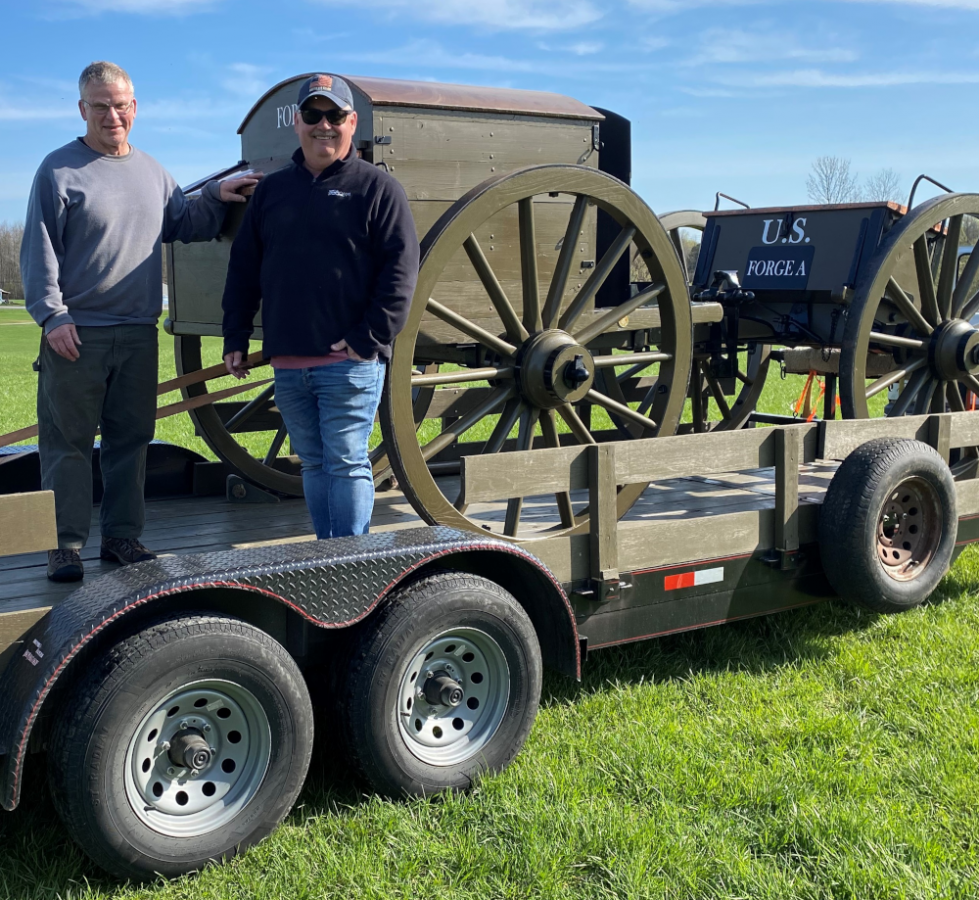From left, blacksmith Kirke Perry and Scott Wilson, Volunteer Fort Tribute Coordinator overseeing the unloading of the Traveling Forge.
MADRID – Fort Tribute has added a traveling forge and limber to its collection.
The traveling forge was used to carry equipment necessary for blacksmiths to carry out their duties and responsibilities of everything from construction of horseshoes to the repair of metal parts of rolling stock, such as wagons and artillery.
“There are less than 2 dozen operational Civil War-era Traveling Forges in existence today,” states Scott Wilson, Volunteer Fort Tribute Coordinator. “During the war, there was a forge for every battery and cavalry regiment. There were thousands of them in use between 1861-1865 and most reenactors and the general public have never even seen one, much less seen one in operation. I have only seen two in my 22 years reenacting. One in Manassas, VA during the 150th anniversary battle reenactment of the Civil War. And the other at our Civil War weekend at the Fort last July.”
This traveling Forge was constructed by Trail Rock Ordnance, Blaine, TN, from plans taken from Artillery for the Land Service of United States, 1849 published by Antique Ordnance Publishers.
It is correct in every detail, said Wilson. It is dimensionally correct and is constructed from the specified species of wood, white oak, walnut, poplar where correct.
Its heart is a Great Bellows which is 2 stage and is about 30 inches square. It has a leather skin and is made as per the period spec. It has the coal box which would be filled with coal, a vice on the stock of the forge etc.
The 1841 limber that accompanies the Traveling Battery Forge is also correct in details as to dimensions and materials. The limber chest is configured without the principle divider and contains the sub-boxes for the tools as prescribed in the US Ordnance manual of 1850. The chest is constructed of cherry. It is stenciled as per specs of the period U.S. Forge…
Read the full article here

Leave a Reply